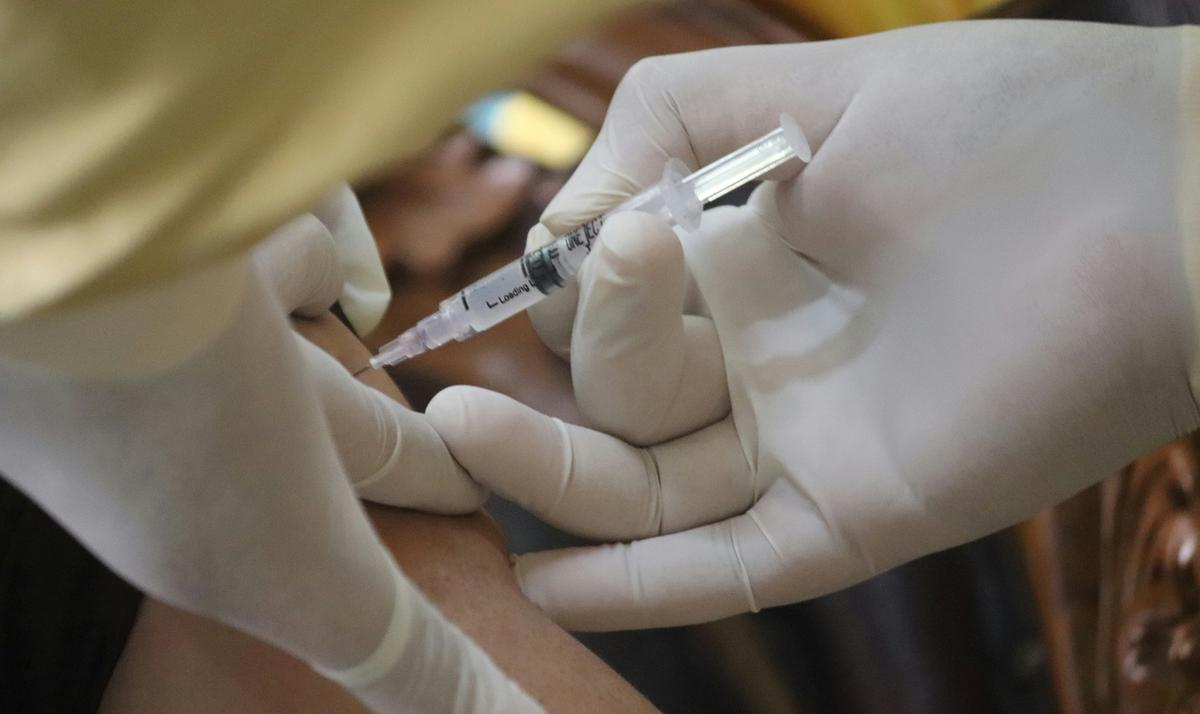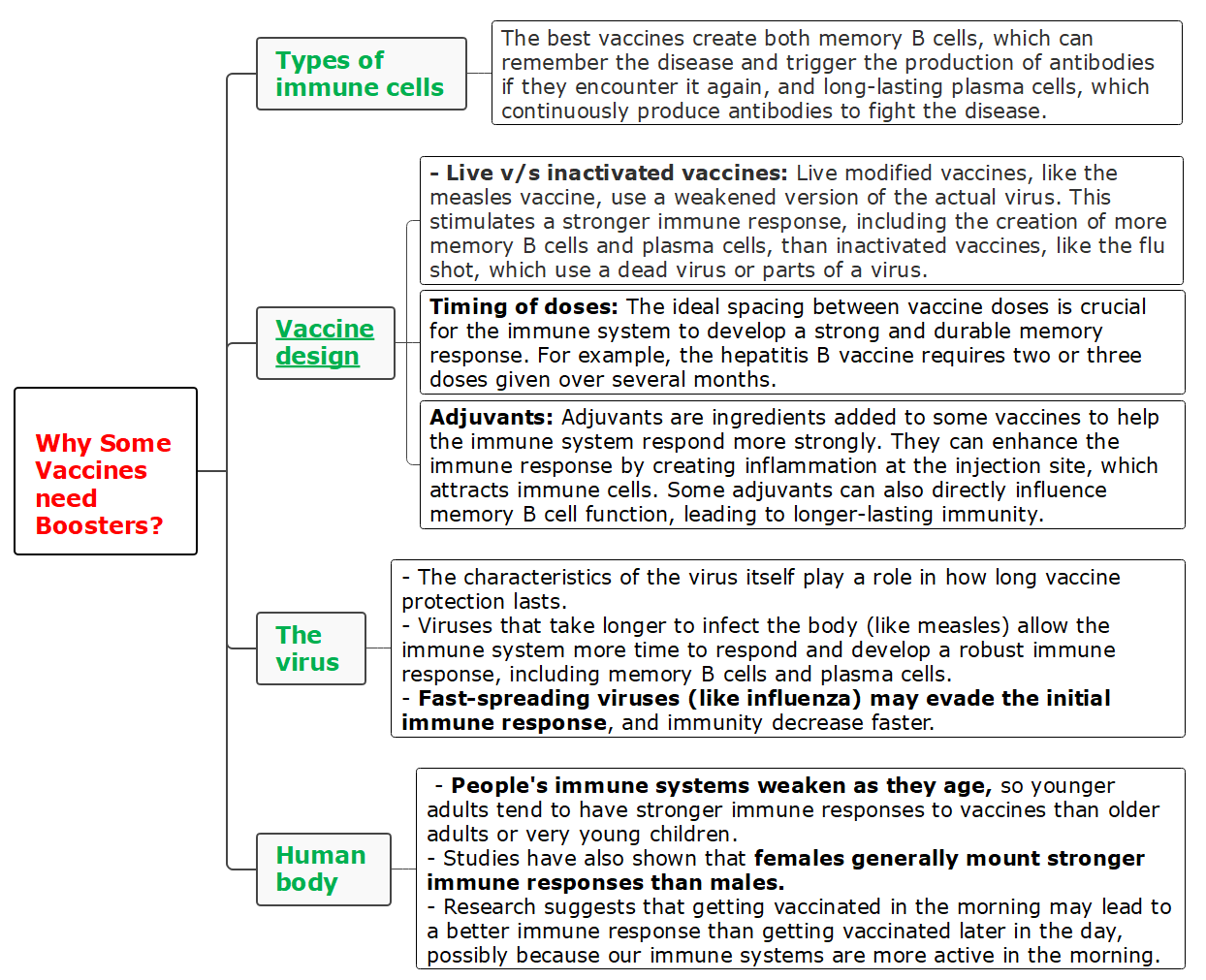Description

Copyright infringement not intended
Picture Courtesy: https://www.thehindu.com/sci-tech/science/why-do-so-many-contemporary-vaccines-have-low-durability-explained/article67990455.ece
Context: Modern vaccinations commonly have a shorter lifetime of protection than traditional vaccinations. While older vaccines, such as the measles vaccine, provide lifetime immunity, many modern vaccines require booster shots to maintain efficiency.
Details
- The term "low durability" refers to the short period of protection provided by many modern vaccines. Despite advances in vaccination technology, many new-generation vaccines fail to provide long-lasting immunity without the need for additional doses.
- To enhance vaccine efficacy and improve public health outcomes, it is essential to understand why modern immunisations are not as long-lasting as they historically were. Long-term protection can lower healthcare expenses, reduce the burden of preventable diseases, and boost population immunity as a whole.
Several factors contribute to the reduced durability of modern vaccines:
- Variations in Immune Response Mechanisms: Different vaccines produce different immune responses. For example, some vaccinations may trigger the development of memory B cells and long-lasting plasma cells (LLPCs), which are essential for long-term immunity, but others may not.
- Vaccine Design: The composition and formulation of vaccines determine how long they last. The intensity and duration of the immune response can be influenced by factors such as antigen selection, additive use, and delivery methods.
- Pathogen Characteristics: The characteristics of the target pathogen, such as its incubation period, route of transmission, and genetic stability, influence vaccination durability. Pathogens with short incubation times or high mutation rates may be able to bypass immunological memory more easily, resulting in lower vaccine efficacy.
- Host-related Factors: Individual immune system, immunisation age, gender, and other host-related features all have an impact on vaccine resilience. Immune responses, for example, may decrease faster in the elderly or people with particular medical disorders.
|
Efforts taken to address the challenges of low vaccine durability
●Research and Development: Scientists conduct extensive studies to better understand the immune response to vaccines and identify factors that influence durability.
●Vaccine Optimization: Optimization of vaccine formulations, dosing schedules, and delivery methods aims to enhance immune responses and prolong vaccine efficacy.
●Adjuvant Development: Adjuvants, substances added to vaccines to enhance immune responses, are being developed to improve vaccine durability.
●Public Health Measures: Education and outreach efforts aim to increase awareness of the importance of vaccination and the need for booster doses where necessary.
|

Way forward in addressing low vaccine durability
- Continued Research: Ongoing research into immune response mechanisms, pathogen biology, and vaccine technology is essential for developing vaccines with prolonged durability.
- Innovation: Advancements in bioengineering technologies, such as nanoparticle vaccines and targeted antigen delivery systems, hold promise for enhancing vaccine-induced immunity and reducing the need for frequent boosters.
- Collaboration: Collaboration between scientists, public health agencies, vaccine manufacturers, and other stakeholders is critical for advancing vaccine development and implementation efforts.

Conclusion
- While many contemporary vaccines have low durability, ongoing research and innovation offer opportunities to overcome this challenge. By addressing vaccine-related, pathogen-related, and host-related factors, scientists aim to develop vaccines that provide durable protection against infectious diseases, ultimately benefiting global public health.
|
PRACTICE QUESTION
Q. Which of the following statements about Herd immunity is incorrect?
A) Herd immunity protects individuals who are not vaccinated.
B) Herd immunity is achieved when a high enough percentage of the population is immune.
C) Herd immunity can only be achieved through natural infection.
D) Herd immunity can wane over time if vaccination rates decline.
Answer: C
|

















